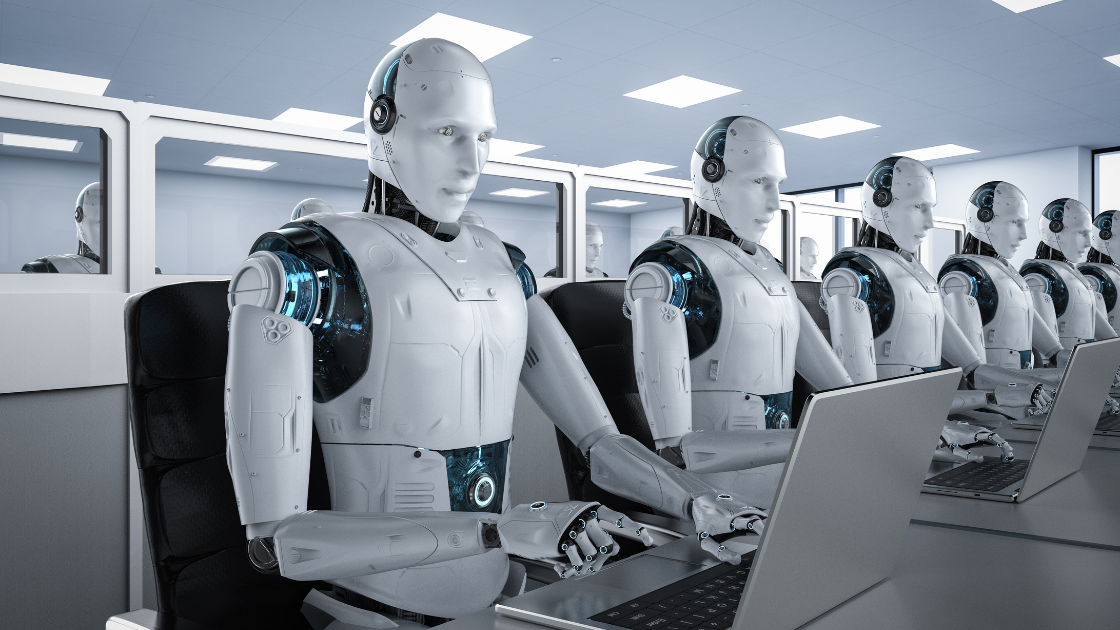Unattended, Attended, or Cognitive Bots: Which bots should bank & credit union choose?
I write about fintech, data, and everything around it
Unattended, attended, and cognitive bots are the future of banking. Learn how credit unions & banks can use these new technologies to improve customer experience and boost customer engagement.
Banking keeps changing. In recent years we’ve seen an array of new services and technologies land on our doorstep. First, there were unattended (robotic) call centers, and financial institutions also began using customer service chatbots. These were followed by cognitive bots, which can “learn” through supervised and unsupervised learning techniques.
Many banks and credit unions use robotic process automation (RPA) to connect legacy core systems to modern core banking software. When it comes to credit unions, the choices regarding which RPA or IPA (Intelligence Process Automation) to implement tremendously affect performance and results.
We know that choosing between bot vendors can be problematic for banks & credit unions. We want to help you find the best solution and ensure we get it right, so we’ve answered all these questions on what makes a great vendor and how to choose the right bot. Let’s get started.
Attended RPA Bots
Attended RPA bots are slightly more advanced than unattended bots and require human input when the bot encounters something it doesn’t know how to handle. These bots have a “conversational” interface that allows them to ask for help from human agents who can then provide specific instructions on what needs to be done next. This approach is often referred to as “assisted automation.” While attended RPA bots take longer than their unattended counterparts, they provide more flexibility in terms of how they can be used within an organization’s workflow processes. They’re also more cost-effective because they require fewer resources (such as less training).
For example, let us take the example of customers filing complaints in their bank and credit union because of a failed transaction. Here, the customer service rep will know how to deal with the problem and guide the user step-by-step to provide an answer and tips to help them sort the issue out.
Let’s say they need to use two displays, make three internal phone transfers, and take eight separate actions in order to finish this. However, the bank can resolve the issue more easily and with fewer constraints or faults by launching an automated code and having an RPA bot do the same.
An attended bot works like a service provider and does all the necessary operations. It also asks for guidance from the rep whenever necessary to ensure that the customer’s needs get satisfied and that they get the best user experience. As a result, these bots can work much better than human service providers or reps by doing faster compliance checks and avoiding manual mistakes that occur in human resources due to feeling bored or tired. Therefore, attended bots can be an excellent RPA solution for credit unions.
Benefits of Attended RPA Bots
- It is agile and user-friendly to use.
- It effectively eliminates real-time data entry tasks.
- It improves team efficiency and productivity.
- It helps banks and credit unions improve customer satisfaction.
- Attended RPA bots require minimal setup and are easy and quick to deploy.
- Besides these, attending RPA bots also helps you quickly achieve ROI.
Disadvantages of attended RPA bots
- Potential Job Losses
- The costs of the initial investment.
- Hiring Skilled Staff
- Resistance from Employees
Use cases
- Processing invoices is part of finance and accounting.
- Processing insurance claims and providing supporting paperwork.
- Sending out receipts and managing inventory are both examples of retail activities.
- In the realm of human resources: new employee orientation.
- Check processing and cancellations are included in the payroll.
Unattended RPA Bots
Unattended RPA bots are the most basic type of bot, but they’re also the fastest to deploy and can help automate routine tasks that don’t require human intervention. They’re a good option for organizations that want to start with automation quickly or need to scale up quickly.
Banks and credit unions can use unattended RPA bots to streamline various labor- and error-intensive manual processes. Unattended RPA is more challenging to install for complicated applications. A lot of banks and credit unions mix attended and unattended RPA solutions. As technology develops and advances, unattended RPA may eventually become the norm.
Benefits of Unattended RPA Bots
- Unattended RPA bots are self-triggered and work without any human intervention.
- It works 24×7 and 365 days a year without any monitoring.
- It enables banks and credit unions to modify functions in real-time.
- It seamlessly deploys, schedules, and audits operations.
- It helps effortlessly gather, sort, and analyze data.
- It significantly reduces operating costs and eliminates errors.
- Besides these, unattended RPA bots run on workstations, private servers, and the cloud.
Disadvantages
Although RPA works best with structured data, most of an organization’s information is locked away in unstructured documents like mail, credit letters, and invoices.
Use cases:
- Businesses and healthcare providers alike can eliminate the need for human intervention by adopting process automation.
- Unattended automation will be performed by one or more robots installed on remote servers or internal workstations. Using their RPA platform, managers can plan the appropriate number of robots to handle the claims and invoices, all while staying within the bounds of the SLA (SLA).
Cognitive Bots
Cognitive bots are the latest and greatest in the bot world. They are designed to mimic human intelligence and understanding, which means they can do anything a human can — and more.
Cognitive bots have been used by large companies like Microsoft, IBM, and Google for several years now. But as these technologies become more affordable and accessible, credit unions can use them in their operations.
Cognitive bots are built using artificial intelligence (AI) technology that mimics human thinking patterns and behavior. They can be programmed with specific rules for responding when certain words or phrases appear in a text or voice chat. The bot will then match this information against what it knows about its environment (how many people are currently logged into the chat system) and decide whether it should respond to you based on those parameters.
Cognitive RPA bots increase business outcomes by combining artificial intelligence (AI) with process automation capabilities. It represents a range of strategies that enhance data collection, decision-making automation, and automation’s scalability.
There are more enhancements that cognitive bots offer in the back office, in addition to well-known instances and market trends. It is difficult when laborious and time-consuming tasks call for the use of human cognitive capacities. All member-facing bank and credit union areas are run by the back office, which is frequently slowed down by sluggish legacy systems and remote data warehouses. While easing the strain on human employees, back-office RPA bots offer efficiency and automation for high-volume sections of a credit union.
Cognitive bots can be highly productive in insurance claims, invoice automation, email marketing, attendance management, and inbox sorting for credit unions.
Advantages of Cognitive RPA Bots
- It streamlines IT service management tasks like identifying issues and automating incident response.
- By bridging the gaps between current RPA bots, low-code apps, and application programming interface integration tools, cognitive bots help automate the value of already existing automation.
- Using cognitive bots helps speed up corporate processes that may have stopped with human decision-makers, decrease bias, and reduce manual decision-making.
- Improves customer experience by combining conversational AI chatbots, RPA bots, and virtual assistants.
Disadvantages of Cognitive RPA Bots
- Investment costs-Unintended outcomes may arise. Businesses must decide whether they should invest in robotic process automation or allow time for its growth. A feasibility study must be prepared before implementing this technology. Without a case study, minimum returns are pointless. This is risky.
- Skilled Hires- Many firms believe RPA requires technical automation knowledge. It’s thought that robots need programming and operation skills. It forces companies to hire competent workers or train existing ones. An automation provider can help with installation and set up.
Use cases:
- KYC compliance-Use public records, customer handwriting, and scanned documents to do KYC verification.
- Trade finance processing-Banks finance international trade. This requires paperwork and regulatory verification. Checks include sanctions and buyer/seller allocation.
- Customer-service policies-Automated policy judgments use data mining and NLP. It gathers policy data and outcomes.
- Reimbursement-Automate claims judgments and payment systems using policy and claim data.
Hybrid Bots
Hybrid RPA bots combine attended and unattended robotic process automation. As a result, it has most of the standout qualities of both kinds. As one of the other two categories, you can employ hybrid RPA systems. It can operate effectively and flexibly on a small or large server. Banks and credit unions won’t need to hire staff to oversee and set up processes for hybrid RPA bots. Most jobs may be automated with this bot system without the involvement of a human.
The hybrid bot version is a combination of attended and unattended RPA bots. This feature provides automation services to front and back offices and promotes end-to-end automation for better outcomes.
Let’s take an example to understand it. The RPA bot for customer support at a bank and credit union can scan and extract information from huge, complex databases, quickly identify the issue the user is experiencing, and provide an effective solution. The bot may then create an email to inform the consumer that their request or complaint has been received and provide an estimated time frame for the bank and credit union to resolve it. Then it can alert a selected person in the department responsible for the problem to start a conversation with the consumer for feedback and to get more details.
Difference between attended and unattended and Cognitive RPA
To understand the workings and applications of unattended and attended RPA bots, let us differentiate between the two:
| FACTORS | UNATTENDED RPA BOTS | ATTENDED RPA BOTS | COGNITIVE BOTS |
| ABOUT | This automation runs on their own, and unattended RPA bots execute each task independently using end-to-end automation. | Attended bots are similar to visual assistants, and they aid in various tasks to boost productivity. | Using cognitive RPA, firms can even automate tasks that rely on unstructured data. |
| POSITION | They automate back-office processes on a significant scale. | They require front-office tasks and team collaboration to work and assist in the assignment. | They are capable of taking pictures that can be used for front-end automation. |
| WORKING | They work independently and follow a rule-based process for task completion. | An employee has to trigger the activation of these bots and interact with them throughout the process. | Not only does it not require human assistance, but it can operate entirely independently. |
| OPERATION | They operate on a present schedule or get triggered by the logic in the process flow. | These bots are ready and thus, we can activate them anytime as required. | A cognitive bot will understand a user’s message, typically written in some kind of chat window, and execute a back-end action. |
| BENEFITS |
|
|
|
| DISADVANTAGES |
|
|
|
| USE CASES |
|
|
|
Conclusion
Overall, the best bet will depend on your specific goals, resources, and expertise. Look at each of the options and determine which is right for you. However, if you want any real chance of success with banking or credit union chatbots, an attended or cognitive bot is likely your best bet. Contact one of our expert consultants at Zuci systems to help your bank or credit union decide what bot option is best for you!
At Zuci Systems, we have worked on use cases ranging from lending & mortgage, risk & compliance, customer service, report automation, employee on-boarding, service desk automation, and more. With a gamut of experience, we have established a highly structured approach to building and deploying Credit Union RPA services and solutions. We work hand in hand with you to define an RPA roadmap, select the right tools, create a time–boxed PoC, perform governance, set up the team, and test the solution before going live.
Related Posts
Related Posts



























